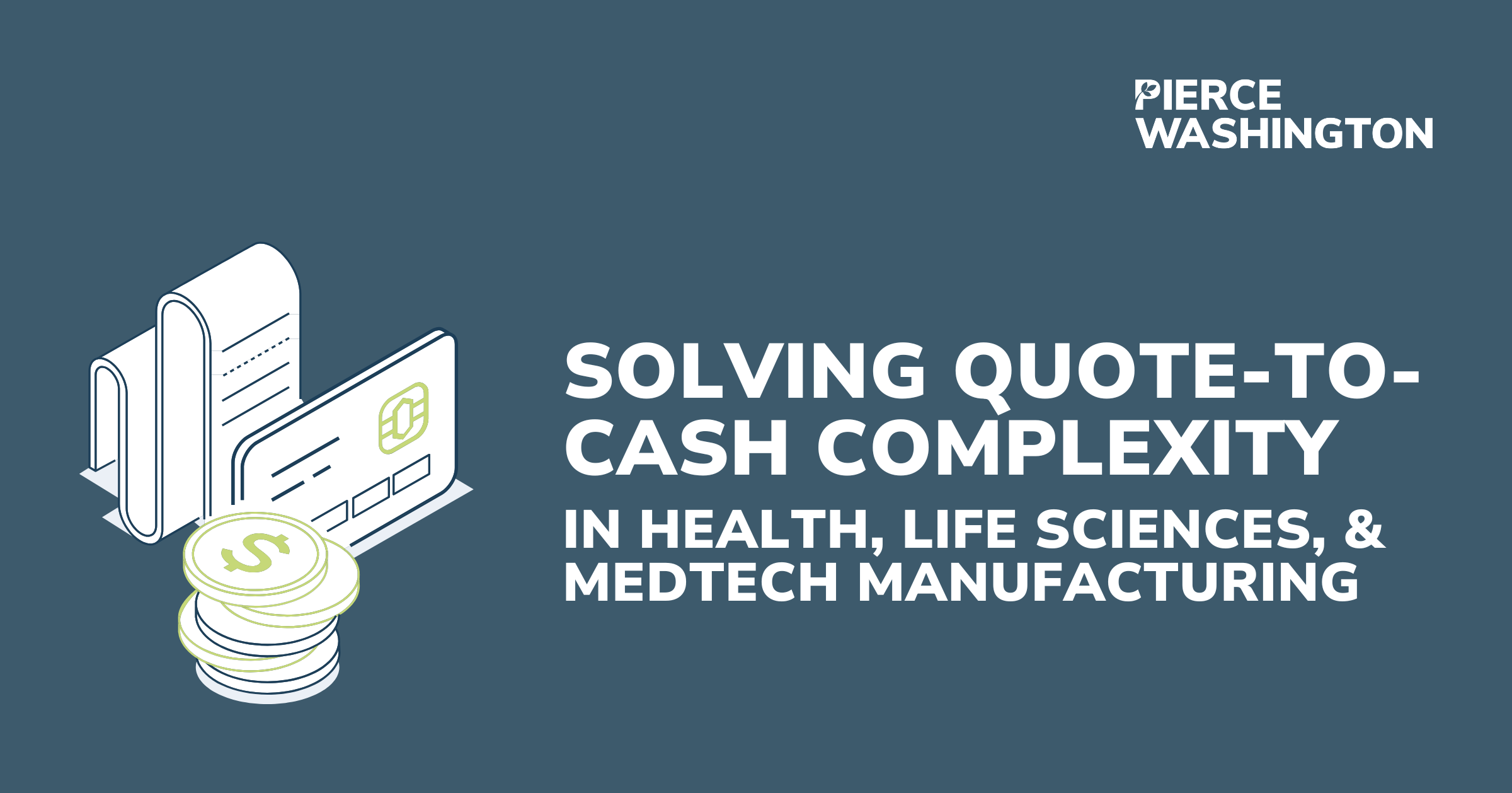Solving Quote-to-Cash Complexity in Health, Life Sciences, and MedTech Manufacturing
B2B manufacturers in the health and life sciences space face one of the most intricate selling environments of any industry. These organizations often produce and sell highly complex, configurable medical devices, consumables, and services—sometimes bundled with digital health subscriptions or warranty plans. Managing such multifaceted offerings requires precision, agility, and alignment across departments. Yet, many companies still rely on legacy quoting systems, homegrown software, or even spreadsheets to navigate their quote-to-cash (Q2C) process. These outdated tools lack the flexibility and intelligence to keep pace with the industry’s evolving demands, creating friction that slows down sales cycles and stifles revenue growth.
The quote-to-cash process is no longer just about producing a quote. It’s a strategic revenue-cycle function that demands integration, automation, and compliance at scale. In today’s global and AI-driven commercial landscape, health and life sciences manufacturers must modernize their Q2C processes to remain competitive.
Below are five critical challenges these companies face, along with the emerging solutions that offer relief.
1. Increasing Complexity in Product Configuration and Pricing
Trend: Modern MedTech and life sciences companies are diversifying their offerings to include modular devices, accessory bundles, digital platforms, and post-sale service contracts. These configurations can involve thousands of SKUs and demand precise coordination between sales, engineering, and finance teams. Sales reps must also navigate tiered pricing agreements, varying discount thresholds, and margin guardrails.
Challenge: Legacy CPQ systems and manual quoting methods are incapable of managing this level of complexity. Sales teams waste valuable time validating configurations, correcting errors, or recreating quotes when products are incorrectly bundled or pricing is miscalculated.
Solution: Advanced Q2C platforms now offer intelligent configuration engines with guided selling, dynamic pricing, and AI-powered rule enforcement. These systems help prevent errors, optimize margins, and provide real-time quote validation. Emerging AI agents can further accelerate the quoting process by auto-suggesting product bundles, enforcing compliance rules, and flagging inconsistent discounts.
2. Subscription and Outcome-Based Models are Gaining Ground
Trend: As healthcare providers look to control costs and reduce CapEx, many MedTech manufacturers are transitioning from transactional equipment sales to subscription or pay-per-use models. These may include equipment rentals, bundled service contracts, usage-based billing, and recurring software access.
Challenge: Managing hybrid business models that mix one-time sales with recurring revenue is inherently complex. Most quoting and billing systems are not built to support both transactional and subscription logic, let alone handle renewals, mid-term changes, or tiered consumption thresholds.
Solution: Modern Q2C systems now integrate subscription management, automated renewal tracking, and usage-based billing engines. These tools support flexible contract structures and ensure revenue recognition compliance. AI can assist by predicting renewal likelihood, optimizing pricing strategies, and automating routine changes to subscription terms. Self-service portals further empower customers to view entitlements, track usage, and request upgrades.
3. Regulatory Compliance and Audit Readiness
Trend: Regulatory scrutiny in healthcare continues to grow, driven by HIPAA, FDA, EU MDR, and other compliance frameworks. Firms must track detailed approval processes, pricing history, and quote versioning, especially when selling into clinical environments.
Challenge: Manual and homegrown systems often lack proper audit trails, role-based access, and approval workflows. This raises the risk of non-compliance, data leakage, or contractual errors.
Solution: Future-ready Q2C tools are built with compliance-first architecture. Automated approval workflows, data encryption, traceable user actions, and granular access controls ensure audit readiness. AI can assist in detecting anomalies, flagging non-compliant quotes, and automating compliance documentation. These systems protect sensitive information while streamlining the sales process.
4. Data Silos and Lack of Commercial Visibility
Trend: Health and life sciences manufacturers operate across a sprawling landscape of disconnected systems: CRM, ERP, legacy configurators, and service platforms. Sales reps and service agents lack a single source of truth when it comes to customer history, deal performance, and contract entitlements.
Challenge: Without consolidated customer data, sales teams are flying blind. This impacts their ability to respond quickly, upsell effectively, and identify revenue leakage.
Solution: Integrating CPQ with a customer data platform unifies commercial information across teams. Modern Q2C systems use AI to surface actionable insights, such as next-best offers, renewal triggers, or at-risk accounts. Data-driven visibility also helps prepare companies to deploy AI agents that can automate task management, quoting, and support.
5. Globalization and Localization Pressures
Trend: As MedTech companies expand globally, they must support multiple currencies, languages, and region-specific compliance standards. Hospital systems and GPOs (group purchasing organizations) negotiate unique pricing and service terms depending on region, facility size, and historical agreements.
Challenge: Quoting tools must enforce contract-specific pricing rules and ensure consistency across regional teams. Without centralized governance, companies risk misquotes, margin erosion, and strained distributor relationships.
Solution: Next-generation Q2C platforms support global rollout strategies while maintaining local agility. Capabilities such as multi-tier pricing hierarchies, multilingual interfaces, and currency conversion have become essential for operating across international markets. AI-driven Q2C tools further enhance performance by dynamically applying region-specific discounts, enforcing business rules, and detecting inconsistencies across distributed sales teams.
Why Pierce Washington
With over two decades of experience delivering complex Q2C solutions, Pierce Washington understands the unique challenges that health and life sciences manufacturers face. PW has implemented robust quoting, pricing, and revenue management systems for industry leaders like Thermo Fisher, McKesson, and Fujifilm Health. Their cross-platform expertise and process-first methodology ensure clients don’t just implement software—they achieve transformation.
Whether modernizing a legacy system, enabling a subscription-based model, or preparing for AI-powered selling, Pierce Washington delivers the Q2C foundation B2B health and life sciences companies need to compete and grow.
